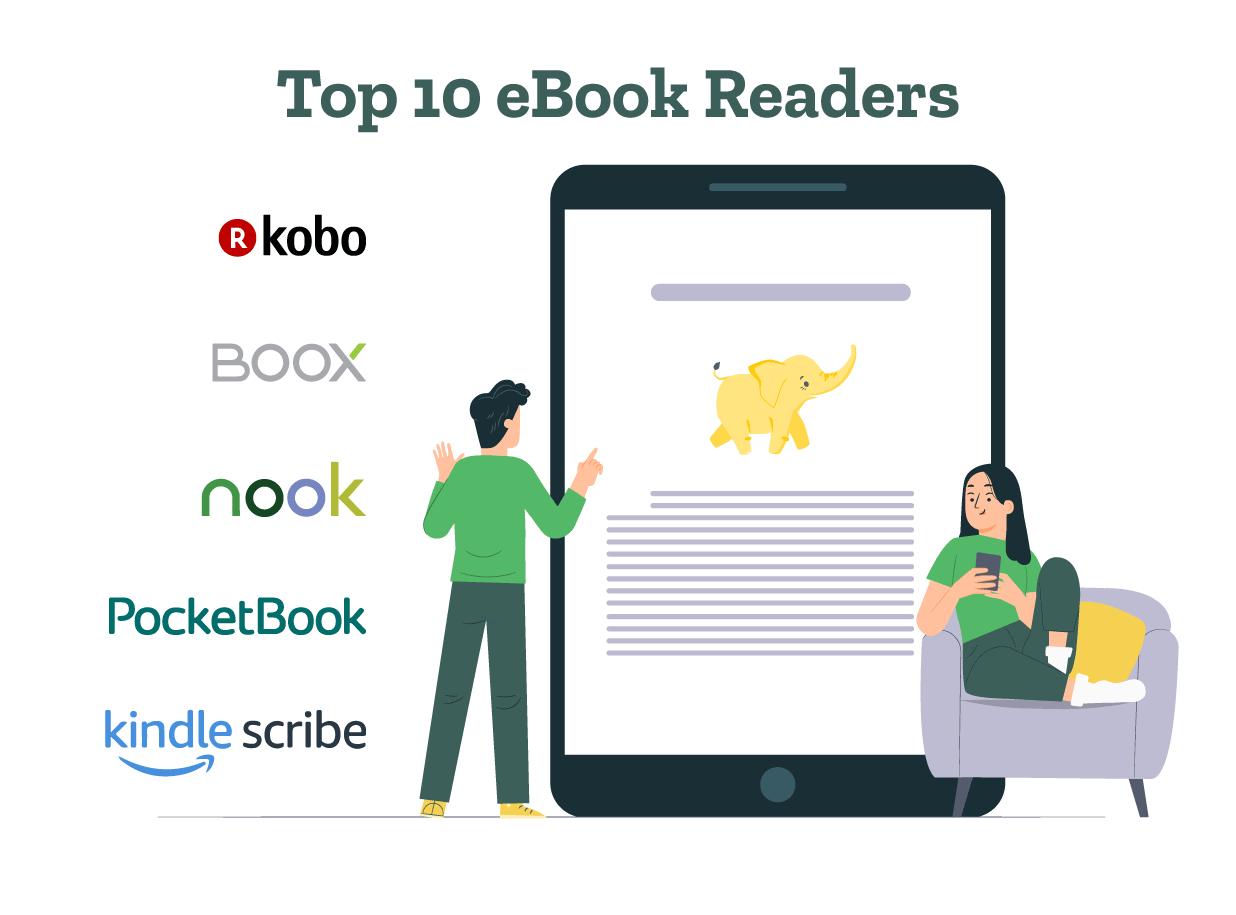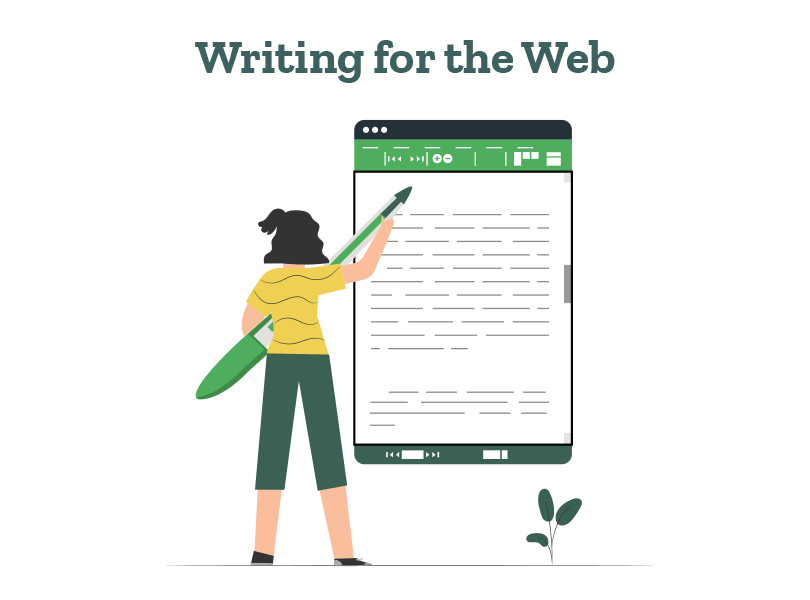- A List of Writing Contests in 2022 | Exciting Prizes!
- Em Dash vs. En Dash vs. Hyphen: When to Use Which
- Book Proofreading 101: The Beginner’s Guide
- Screenplay Editing: Importance, Cost, & Self-Editing Tips
- Screenplay Proofreading: Importance, Process, & Cost
- Script Proofreading: Rates, Process, & Proofreading Tips
- Manuscript Proofreading | Definition, Process & Standard Rates
- Tips to Write Better if English Is Your Second Language
- Novel Proofreading | Definition, Significance & Standard Rates
- Top 10 Must-Try Writing Prompt Generators in 2024
- 100+ Creative Writing Prompts for Masterful Storytelling
- Top 10 eBook Creator Tools in 2024: Free & Paid
- 50 Timeless and Unforgettable Book Covers of All Time
- What Is Flash Fiction? Definition, Examples & Types
- 80 Enchanting Christmas Writing Prompts for Your Next Story
- Your Guide to the Best eBook Readers in 2024
- Top 10 Book Review Clubs of 2025 to Share Literary Insights
- 2024’s Top 10 Self-Help Books for Better Living
- Writing Contests 2023: Cash Prizes, Free Entries, & More!
- What Is a Book Teaser and How to Write It: Tips and Examples
- Audiobook vs. EBook vs. Paperback in 2024: (Pros & Cons)
- How to Get a Literary Agent in 2024: The Complete Guide
- Alpha Readers: Where to Find Them and Alpha vs. Beta Readers
- Author Branding 101: How to Build a Powerful Author Brand
- A Guide on How to Write a Book Synopsis: Steps and Examples
- How to Write a Book Review (Meaning, Tips & Examples)
- 50 Best Literary Agents in the USA for Authors in 2024
- Building an Author Website: The Ultimate Guide with Examples
- Top 10 Paraphrasing Tools for All (Free & Paid)
- Top 10 Book Editing Software in 2024 (Free & Paid)
- What Are Large Language Models and How They Work: Explained!
- Top 10 Hardcover Book Printing Services [Best of 2024]
- 2024’s Top 10 Setting Generators to Create Unique Settings
- Different Types of Characters in Stories That Steal the Show
- Top 10 Screenplay & Scriptwriting Software (Free & Paid)
- 10 Best AI Text Generators of 2024: Pros, Cons, and Prices
- Top 10 Must-Try Character Name Generators in 2024
- 10 Best AI Text Summarizers in 2024 (Free & Paid)
- 2024’s 10 Best Punctuation Checkers for Error-Free Text
- 11 Best Story Structures for Writers (+ Examples!)
- How to Write a Book with AI in 2024 (Free & Paid Tools)
- Writing Contests 2024: Cash Prizes & Free Entries!
- Patchwork Plagiarism: Definition, Types, & Examples
- Simple Resume Formats for Maximum Impact With Samples
- What Is a Complement in a Sentence? (Meaning, Types & Examples)
- What are Clauses? Definition, Meaning, Types, and Examples
- Persuasive Writing Guide: Techniques & Examples
- How to Paraphrase a Text (Examples + 10 Strategies!)
- A Simple Proofreading Checklist to Catch Every Mistake
- Top 10 AI Resume Checkers for Job Seekers (Free & Paid)
- 20 Best Comic Book Covers of All Time!
- How to Edit a Book: A Practical Guide with 7 Easy Steps
- How to Write an Autobiography (7 Amazing Strategies!)
- How to Publish a Comic Book: Nine Steps & Publishing Costs
- Passive and Active Voice (Meaning, Examples & Uses)
- How to Publish a Short Story & Best Publishing Platforms
- What Is Expository Writing? Types, Examples, & 10 Tips
- 10 Best Introduction Generators (Includes Free AI Tools!)
- Creative Writing: A Beginner’s Guide to Get Started
- How to Sell Books Online (Steps, Best Platforms & Tools)
- Top 10 Book Promotion Services for Authors (2025)
- 15 Different Types of Poems: Examples & Insight into Poetic Styles
- 10 Best Book Writing Apps for Writers 2025: Free & Paid!
- Top 10 AI Humanizers of 2025 [Free & Paid Tools]
- How to Write a Poem: Step-by-Step Guide to Writing Poetry
- 100+ Amazing Short Story Ideas to Craft Unforgettable Stories
- The Top 10 Literary Devices: Definitions & Examples
- Top 10 AI Translators for High-Quality Translation in 2025
- Top 10 AI Tools for Research in 2025 (Fast & Efficient!)
- 50 Best Essay Prompts for College Students in 2025
- Top 10 Book Distribution Services for Authors in 2025
- Best 101 Greatest Fictional Characters of All Time
- Top 10 Book Title Generators of 2025
- Best Fonts and Sizes for Books: A Complete Guide
- What Is an Adjective? Definition, Usage & Examples
- How to Track Changes in Google Docs: A 7-Step Guide
- Best Book Review Sites of 2025: Top 10 Picks
- Parts of a Book: A Practical, Easy-to-Understand Guide
- What Is an Anthology? Meaning, Types, & Anthology Examples
- How to Write a Book Report | Steps, Examples & Free Template
- 10 Best Plot Generators for Engaging Storytelling in 2025
- 30 Powerful Poems About Life to Inspire and Uplift You
- What Is a Poem? Poetry Definition, Elements, & Examples
- Metonymy: Definition, Examples, and How to Use It In Writing
- How to Write a CV with AI in 9 Steps (+ AI CV Builders)
- What Is an Adverb? Definition, Types, & Practical Examples
- How to Create the Perfect Book Trailer for Free
- Top 10 Book Publishing Companies in 2025
- 14 Punctuation Marks: A Guide on How to Use with Examples!
- Translation Services: Top 10 Professional Translators (2025)
- 10 Best Free Online Grammar Checkers: Features and Ratings
- 30 Popular Children’s Books Teachers Recommend in 2025
- 10 Best Photobook Makers of 2025 We Tested This Year
- Top 10 Book Marketing Services of 2025: Features and Costs
- Top 10 Book Printing Services for Authors in 2025
- 10 Best AI Detector Tools in 2025
- Audiobook Marketing Guide: Best Strategies, Tools & Ideas
- 10 Best AI Writing Assistants of 2025 (Features + Pricing)
- How to Write a Book Press Release that Grabs Attention
- 15 Powerful Writing Techniques for Authors in 2025
- Generative AI: Types, Impact, Advantages, Disadvantages
- Top 101 Bone-Chilling Horror Writing Prompts
- 25 Figures of Speech Simplified: Definitions and Examples
- Top 10 AI Rewriters for Perfect Text in 2025 (Free & Paid)
- Best EBook Cover Design Services of 2025 for Authors
- Writing Contests 2025: Cash Prizes, Free Entries, and More!
- Top 10 Book Writing Software, Websites, and Tools in 2025
- National Novel Writing Month (NaNoWriMo)
- Best Horror Books of All Time (Must-Read List)
- Best Book Trailer Services
- What is a Book Copyright Page?
- Final Checklist: Is My Article Ready for Submitting to Journals?
- 8 Pre-Publishing Steps to Self-Publish Your Book
- 7 Essential Elements of a Book Cover Design
- How to Copyright Your Book in the US, UK, & India
- Beta Readers: Why You Should Know About Them in 2024
- How to Publish a Book in 2024: Essential Tips for Beginners
- Book Cover Design Basics: Tips & Best Book Cover Ideas
- Why and How to Use an Author Pen Name: Guide for Authors
- How to Format a Book in 2025: 7 Tips for Book Formatting
- What is Manuscript Critique? Benefits, Process, & Cost
- 10 Best Ghostwriting Services for Authors in 2025
- ISBN Guide 2025: What Is an ISBN and How to Get an ISBN
- Best Manuscript Editing Services of 2025
- How to Hire a Book Editor in 5 Practical Steps
- Self-Publishing Options for Writers
- How to Promote Your Book Using a Goodreads Author Page
- 7 Essential Elements of a Book Cover Design
- What Makes Typesetting a Pre-Publishing Essential for Every Author?
- 4 Online Publishing Platforms To Boost Your Readership
- Typesetting: An Introduction
- Quick Guide to Novel Editing (with a Self-Editing Checklist)
- Self-Publishing vs. Traditional Publishing: 2024 Guide
- How to Publish a Book in 2024: Essential Tips for Beginners
- How to Publish a Book on Amazon: 8 Easy Steps [2024 Update]
- What are Print-on-Demand Books? Cost and Process in 2024
- What Are the Standard Book Sizes for Publishing Your Book?
- How to Market Your Book on Amazon to Maximize Sales in 2024
- Top 10 Hardcover Book Printing Services [Best of 2024]
- How to Find an Editor for Your Book in 8 Steps (+ Costs!)
- What Is Amazon Self-Publishing? Pros, Cons & Key Insights
- Manuscript Editing in 2024: Elevating Your Writing for Success
- Know Everything About How to Make an Audiobook
- A Simple 14-Point Self-Publishing Checklist for Authors
- How to Write an Engaging Author Bio: Tips and Examples
- Book Cover Design Basics: Tips & Best Book Cover Ideas
- How to Publish a Comic Book: Nine Steps & Publishing Costs
- Why and How to Use an Author Pen Name: Guide for Authors
- How to Sell Books Online (Steps, Best Platforms & Tools)
- A Simple Guide to Select the Best Self-Publishing Websites
- 10 Best Book Cover Design Services of 2025: Price & Ratings
- How Much Does It Cost to Self-Publish a Book in 2025?
- Quick Guide to Book Editing [Complete Process & Standard Rates]
- How to Distinguish Between Genuine and Fake Literary Agents
- What is Self-Publishing? Everything You Need to Know
- How to Copyright a Book in 2025 (Costs + Free Template)
- The Best eBook Conversion Services of 2025: Top 10 Picks
- 10 Best Self-Publishing Companies of 2025: Price & Royalties
- 10 Best Photobook Makers of 2025 We Tested This Year
- Book Cover Types: Formats, Bindings & Styles
- ISBN Guide 2025: What Is an ISBN and How to Get an ISBN
- A Beginner’s Guide on How to Self Publish a Book (2025)
- Index in a Book: Definition, Purpose, and How to Use It
- How to Publish a Novel: Easy Step-By-Step Guide
- How to start your own online publishing company?
- 8 Tips To Write Appealing Query Letters
- Self-Publishing vs. Traditional Publishing: 2024 Guide
- How to Publish a Book in 2024: Essential Tips for Beginners
- What are Print-on-Demand Books? Cost and Process in 2024
- How to Write a Query Letter (Examples + Free Template)
- Third-person Point of View: Definition, Types, Examples
- How to Write an Engaging Author Bio: Tips and Examples
- How to Publish a Comic Book: Nine Steps & Publishing Costs
- Top 10 Book Publishing Companies in 2025
- 10 Best Photobook Makers of 2025 We Tested This Year
- Book Cover Types: Formats, Bindings & Styles
- ISBN Guide 2025: What Is an ISBN and How to Get an ISBN
- Index in a Book: Definition, Purpose, and How to Use It
- How to Publish a Novel: Easy Step-By-Step Guide
- How to Create Depth in Characters
- Starting Your Book With a Bang: Ways to Catch Readers’ Attention
- Research for Fiction Writers: A Complete Guide
- Short stories: Do’s and don’ts
- How to Write Dialogue: 7 Rules, 5 Tips & 65 Examples
- What Are Foil and Stock Characters? Easy Examples from Harry Potter
- How To Write Better Letters In Your Novel
- On Being Tense About Tense: What Verb Tense To Write Your Novel In
- How To Create A Stellar Plot Outline
- How to Punctuate Dialogue in Fiction
- On Being Tense about Tense: Present Tense Narratives in Novels
- The Essential Guide to Worldbuilding [from Book Editors]
- What Is Point of View? Definition, Types, & Examples in Writing
- How to Create Powerful Conflict in Your Story | Useful Examples
- How to Write a Book: A Step-by-Step Guide
- How to Write a Short Story in 6 Simple Steps
- How to Write a Novel: 8 Steps to Help You Start Writing
- What Is a Stock Character? 150 Examples from 5 Genres
- Joseph Campbell’s Hero’s Journey: Worksheet & Examples
- Novel Outline: A Proven Blueprint [+ Free Template!]
- Character Development: 7-Step Guide for Writers
- What Is NaNoWriMo? Top 7 Tips to Ace the Writing Marathon
- What Is the Setting of a Story? Meaning + 7 Expert Tips
- What Is a Blurb? Meaning, Examples & 10 Expert Tips
- What Is Show, Don’t Tell? (Meaning, Examples & 6 Tips)
- How to Write a Book Summary: Example, Tips, & Bonus Section
- How to Write a Book Description (Examples + Free Template)
- 10 Best Free AI Resume Builders to Create the Perfect CV
- A Complete Guide on How to Use ChatGPT to Write a Resume
- 10 Best AI Writer Tools Every Writer Should Know About
- How to Write a Book Title (15 Expert Tips + Examples)
- 100 Novel and Book Ideas to Start Your Book Writing Journey
- Exploring Writing Styles: Meaning, Types, and Examples
- Mastering Professional Email Writing: Steps, Tips & Examples
- How to Write a Screenplay: Expert Tips, Steps, and Examples
- Business Proposal Guide: How to Write, Examples and Template
- Different Types of Resumes: Explained with Tips and Examples
- How to Create a Memorable Protagonist (7 Expert Tips)
- How to Write an Antagonist (Examples & 7 Expert Tips)
- Writing for the Web: 7 Expert Tips for Web Content Writing
- 10 Best AI Text Generators of 2024: Pros, Cons, and Prices
- What are the Parts of a Sentence? An Easy-to-Learn Guide
- What Is Climax Of A Story & How To Craft A Gripping Climax
- What Is a Subject of a Sentence? Meaning, Examples & Types
- Object of a Sentence: Your Comprehensive Guide
- What Is First-Person Point of View? Tips & Practical Examples
- Second-person Point of View: What Is It and Examples
- 10 Best AI Essay Outline Generators of 2024
- Third-person Point of View: Definition, Types, Examples
- The Importance of Proofreading: A Comprehensive Overview
- Patchwork Plagiarism: Definition, Types, & Examples
- Simple Resume Formats for Maximum Impact With Samples
- The Ultimate Guide to Phrases In English – Types & Examples
- Modifiers: Definition, Meaning, Types, and Examples
- What are Clauses? Definition, Meaning, Types, and Examples
- Persuasive Writing Guide: Techniques & Examples
- What Is a Simile? Meaning, Examples & How to Use Similes
- Mastering Metaphors: Definition, Types, and Examples
- How to Publish a Comic Book: Nine Steps & Publishing Costs
- Essential Grammar Rules: Master Basic & Advanced Writing Skills
- Benefits of Using an AI Writing Generator for Editing
- Hyperbole in Writing: Definition and Examples
- 15 Best ATS-Friendly ChatGPT Prompts for Resumes in 2025
- How to Write a Novel in Past Tense? 3 Steps & Examples
- 10 Best Spell Checkers of 2025: Features, Accuracy & Ranking
- Foil Character: Definition, History, & Examples
- 5 Key Elements of a Short Story: Essential Tips for Writers
- How to Write a Children’s Book: An Easy Step-by-Step Guide
- How To Write a Murder Mystery Story
- What Is an Adjective? Definition, Usage & Examples
- Metonymy: Definition, Examples, and How to Use It In Writing
- Fourth-Person Point of View: A Unique Narrative Guide
- How to Write a CV with AI in 9 Steps (+ AI CV Builders)
- What Is an Adverb? Definition, Types, & Practical Examples
- How to Write A Legal Document in 6 Easy Steps
- 10 Best AI Story Generators in 2025: Write Captivating Tales
- How to Introduce a Character Effectively
- What is Rhetoric and How to Use It in Your Writing
- How to Write a Powerful Plot in 12 Steps
- How to Make Money as a Writer: Your First $1,000 Guide
- How to Write SEO Content: Tips for SEO-Optimized Content
- Types of Introductions and Examples
- What is a Cliffhanger? Definition, Examples, & Writing Tips
- How to Write Cliffhangers that Keep Readers Hooked!
- How to Write a Romance Novel: Step-by-Step Guide
- Top 10 Writing Tips from Famous Authors
- 10 Best Ghostwriting Services for Authors in 2025
- What is Ghostwriting? Meaning and Examples
- How to Become a Ghostwriter: Complete Career Guide
- How to Write a Speech that Inspires (With Examples)
- Theme of a Story | Meaning, Common Themes & Examples
- 10 Best AI Writing Assistants of 2025 (Features + Pricing)
- Generative AI: Types, Impact, Advantages, Disadvantages
- Worldbuilding Questions and Templates (Free)
- How to Avoid Plagiarism in 2025 (10 Effective Strategies!)
- How to Create Marketing Material
- What Is Worldbuilding? Steps, Tips, and Examples
- How to Avoid AI Detection in 2025 (6 Proven Techniques!)
- What is Syntax in Writing: Definition and Examples
- What is a Subplot? Meaning, Examples & Types
- Writing Challenges Every Writer Should Take
- What Is a Memoir? Definition, Examples, and Tips
Still have questions? Leave a comment
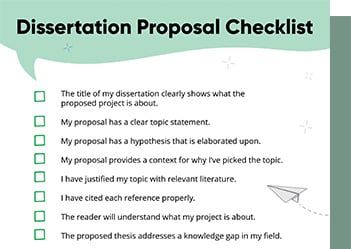
Checklist: Dissertation Proposal
Enter your email id to get the downloadable right in your inbox!
[contact-form-7 id="12425" title="Checklist: Dissertation Proposal"]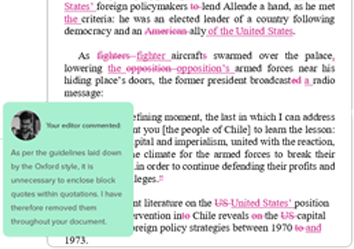
Examples: Edited Papers
Enter your email id to get the downloadable right in your inbox!
[contact-form-7 id="12426" title="Examples: Edited Papers"]Need
Editing and
Proofreading Services?

How to Write a Romance Novel: Step-by-Step Guide
 Jul 24, 2025
Jul 24, 2025 7
min read
7
min read
- Tags: Book Writing, Fiction, Non-fiction, Novel Writing, Writing Tips
Do you enjoy reading toe-curling romance novels, and dream of writing one of your own, but don’t know where to begin?
We have curated a step-by-step guide to help you understand the romance genre and begin working on your future bestseller!
Dream of Publishing a Romance Novel? Make It Come True Now! Get Started
Understanding the romance genre
Before you start writing, it is important to have a thorough understanding of the romance genre. Here are some important points to keep in mind before you begin outlining your novel:
What Defines a Romance Novel?
To put it simply, a romance novel is one where the central theme of the work is a romantic relationship. It can be between heterosexual individuals or non-binary/members of the LGBTQIA+ community. However, the main aim of the work is to follow and chronicle the ups and downs of their romantic relationship.
The ending can either be a typical fairy-tale ‘happily-ever-after’ (HEA) where the protagonists walk off into the sunset to begin the rest of their lives together, or a ‘happy-for-now’ (HFN) situation, which focuses more on the immediate future and not the long term.
Popular subgenres in romance novels are contemporary (eg. Luv Shuv in New York by N. M. Patel), historical (the Bridgerton series by Julia Quinn), paranormal (the Twilight saga by Stephenie Meyer), romantic suspense (the classic Rebecca by Daphne du Maurier), erotica (the Fifty Shades series by E. L. James), fantasy (A Court of Thorns and Roses series by Sarah J. Maas) and so on.
While market trends keep changing, the romance novel has been a favourite, especially among female readers, for hundreds of years. While the current paperback trend (post the COVID-19 pandemic) favors non-fiction, romantic fiction maintains its bestseller status in the ebook category, with several novels going viral on Booktok, which many readers turn to for recommendations. Romance is especially popular with women aged 20s to 50s, most of whom like to imagine themselves in the place of the female protagonist and live vicariously through her adventures.
Reader expectations and conventions
Given its popularity as a genre, there are certain tropes and conventions that are especially popular, and that some readers veer towards. Some classic tropes are enemies-to-lovers, friends-to-lovers, opposites attract, and grumpy/sunshine, where one character is a notorious grump while the other is all sunshine and daisies.
No love story is a flat line—ups and downs are inevitable, and keep readers on their toes. Popular conventions are the meet-cute (a memorable meeting between the protagonists), will-they-won’t-they, and romantic conflict that keeps the readers guessing till the end.
It is important to keep in mind that emotional payoff and character growth and transformation are of prime importance—most readers like to read a happily-ever-after, and for this, the protagonists need to work through their issues and grow as human beings in order to be better partners. Protagonists with zero emotional growth are likely to quickly become unpopular.
Developing compelling romantic characters
Since romance novels spend a great deal of time following the daily life of the protagonists, it is important to make them both relatable and likable. Here’s how to craft protagonists that will stay with your readers long after they have finished the book:
1. Create relatable, multidimensional characters who have flaws, backstories, and interests and goals outside of snagging the hero/heroine. Avoid writing a Mary Sue who immediately gets along with everyone, or a Manic Pixie Dreamgirl who seems to exist only to complete the hero’s life.
2. Make sure your book passes the Bechdel test. The Bechdel test checks whether or not the female characters have been properly fleshed out by one simple metric—do the female characters converse with each other about anything other than the male characters? If yes, your book has passed!
3. Craft the personalities of your protagonists such that they have good chemistry and romantic tension. Give them dialog and body language that suits their personalities. Additionally, there is a delicate balance to be maintained between showing and telling in scenes of attraction and romantic tension—while you can ‘tell’ through dialog and the character’s internal monologue, and ‘show’ through their actions, eg. ‘tell’ by confessing their feelings, or ‘show’ by pulling in their love interest for a kiss.
4. Nobody exists in a vacuum—a believable protagonist needs a believable circle of family and friends, and maybe even an antagonist (like an ex) who comes in to spice things up! Give them backstories of their own and avoid turning them into one-dimensional caricatures. Their storylines can also be used as subplots and to create and resolve conflict.
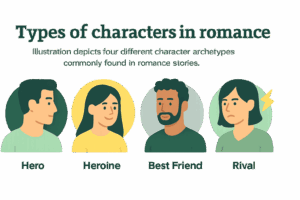
Crafting a captivating romance plot
Like in every other genre, it is important to plot your story well. Most romantic novels follow a similar plot structure:
- The setup—basic background of the characters and how they meet
- The incident—the first spark of romance
- Rising tension—a series of events/conversations that amp up the attraction
- Dark moment—an obstacle they encounter that could potentially pull them apart
- Resolution—how they work through it and get their happily-ever-after.
It is important to pace your novel well and balance the romantic moments with the external plot—too much focus on either will make the story monotonous. You can use an old-fashioned notebook or online tools such as Spreadsheets or Google Sheets to plot out your story in a systematic fashion.
It is also very important to write conflict well. There are two kinds of conflict characters are likely to face—internal and external. Internal conflict refers to issues the protagonists deal with between themselves, such as hurt from a past relationship or reluctance to commit. External conflict refers to obstacles that appear out of their control, such as the actions of an antagonist or the reappearance of a lost-lost ex.
If you wish to draw out the romantic tension before the protagonists finally admit their feelings and get into a relationship, establish compelling reasons why they can’t be together yet, and create believable situations that help them work through those problems without waving a magic wand and setting everything right in one go. Escalating and resolving conflict in an authentic and believable manner is of the essence in romantic novels.
How to write unforgettable romance scenes
Now we come to the fun part—how to write unforgettable romance scenes! There are different kinds of romantic scenes you can write, all of which are detailed below:
1. In romance writing, it is important to perfect the art of the meet-cute. How do the protagonists meet? Is it a dramatic encounter where one saves the other’s life, or something embarrassing, where one accidentally spills coffee all over the other, or is it love at first sight, where one looks across a crowded room and falls head over heels? Whichever it is, it is important to write a memorable and engaging first meeting that sets the stage for romance.
2. A smooth journey to a happily ending is boring. It is important to include instances of tension to build anticipation that will make the ending that much sweeter. For example, let one character be head-over-heels in love, while the other needs to be pursued (in a non-creepy way!) and wooed. Create suspense by giving the characters secrets and creating misunderstandings (when appropriate) so that the resolution brings them closer. For example, one character has a deep, dark past they’re running away from, or another has a child from a prior relationship, and this could potentially be an obstacle in their story.
3. There is a difference between love scenes and sex scenes—it takes a good balance of both to write a good romance! A love scene focuses more on building emotional intimacy through confessions, kisses, and bonding through dialogue. On the other hand, a sex scene is more about the physicality of the characters—how they look, how they approach each other, and how they take their physical relationship to the next level. Using all five senses of the characters—sight, touch, taste, hearing, and smell—will help you write an immersive sex scene.
4. Finally, it is very important to avoid clichés that would make your story predictable. Subverting common tropes would make the reader sit up and take notice of your book in a sea of similar stories. For example, instead of writing a bad boy hero and a nerdy, good girl heroine, make the heroine the bad girl, and the hero the lovable nerd. Get into the shoes of the character when writing their dialogs in order to keep it authentic and believable. For example, a tough guy confessing his love isn’t likely to suddenly use flowery, romantic language—he would most likely convey his feelings through his actions and a few impactful words.
Setting and world-building in romance
When writing fiction, it is important to build realistic, immersive settings that help make the story more believable and visual for the reader. The setting also plays a major role in setting the mood for romantic scenes.
When it comes to writing contemporary romance, it is easier to set the scene as you are already familiar with life and conventions in the modern era. One popular trope is incorporating text-messaging scenes to show how characters interact with each other, interspersed with their thoughts behind the scenes that go into the formulation of each message that they send in their courtship phase. The works of bestselling American author Meg Cabot frequently involve texting and email scenes where the hero and heroine attempt to flirt virtually.
When it comes to historical romance, on the other hand, you would need to put in more research to ensure you get the dialog, dress, hair, costumes, and settings right. It is a good idea to watch period dramas set in your preferred era and place to get a clear mental image of how to describe the setting and backdrop. For instance, if you want to write a romance set in the Scottish highlands, reading or watching the Outlander series is a great option.
Revising and editing your romance novel
With any book, it is important to run some basic quality checks before submitting it to publishers. While reading and editing your manuscript yourself is helpful, it is better to view it through a fresh pair of eyes, such as a beta reader or professional editor, to pick out any errors that you may have missed.
Feedback from beta readers—whether friends, editors, or members of online writing communities like Reddit—can also help you improve on certain characterizations, dialogs, and plot points that may not have otherwise occurred to you. Working with a developmental editor is especially useful to gain feedback on how to improve the finer aspects of your work beyond simple grammar and punctuation, and turn your manuscript into a masterpiece.
Navigating the romance publishing landscape
The good news is that romance authors have plenty of options to get published! Whether you opt for self-publishing services (check out our end-to-end self-publishing services here), prefer to publish online on Kindle Direct Publishing, or choose to go with a traditional publisher, it is important to keep certain factors in mind:
1. It is important to write a good query note/pitch that brings out the important aspects of your novel and is likely to catch the publisher’s eye. It would help to begin by introducing the characters and their backgrounds and then introducing the potential conflicts, making it clear to the publisher how you intend to build up the story. Highlighting how your novel is unique and different from others in the genre is essential.
2. Cover design is of prime importance in the romance genre—whether historical, fantasy, or contemporary romance, it is important to work with a designer who understands your brief and creates a cover that reflects the story so that it draws more eyeballs.
3. As a romance author, you need to build your author platform on social media sites like X, TikTok (hop on the Booktok bandwagon!), or Instagram to connect with romance readers and build your author platform.
There are also publishers like Harlequin, Mills & Boon, and Avon that have specialized in romance for generations that you can explore.
Whether you choose to opt for traditional or self-publishing should be decided by a few factors:
1. How soon do you want to be published? Traditional publishers typically have a turnaround time of about a year, whereas self-publishers work faster.
2. Do you want to have complete control over monitoring sales? While traditional publishers pay royalties at fixed times of the year, they are in control of monitoring sales. Self-published authors, on the other hand, can monitor their sales numbers themselves in real time.
3. How much are you willing to invest? Traditional publishers do not charge authors to publish their books, whereas self-publishers do. Plan your budget and choose your path accordingly.
Advanced tips and common challenges
Now that we have the basics in place, here are some common challenges faced by romance writers, and tips to overcome them:
1. Maintaining a fun and sustainable writing routine goes a long way in helping you complete your novel. Set small goals of about 500–1000 words per day (whatever you are comfortable with) and sit down at the same time every day to achieve this goal. A goal of 500 words per day would help you finish a novel in about 100 days, and 1000 words per day will help you complete your novel in roughly 50 days. Eventually, it will become routine and you will be able to improve your productivity.
2. Most writers face writer’s block at some time in their career. The best way to overcome this is to read extensively in your genre of choice—in this case, romance—in order to get your words flowing.
3. It is important to include diversity in your work (as realistically as possible) without falling prey to harmful racial and religious stereotypes. Draw on real-life interactions or interview people belonging to the groups you would like to write about so that you represent them correctly.
4. If you want to expand your novel into a romance series or write a spin-off on a particular character, it is important to leave important cues and plot points in your first novel that can later be picked up and expanded upon. Plotting out your series—deciding how many books to write and the events and characters of each book—will go a long way in helping you meet your writing goals.
We hope this extensive guide helps you plot and write your romance bestseller! Happy writing!
PaperTrue offers expert, hassle-free book self-publishing services that allow you to get your manuscript edited and published by professionals. Check them out!
Here are some more resources that may help you:





